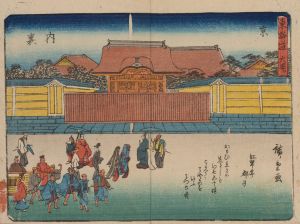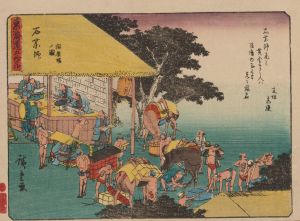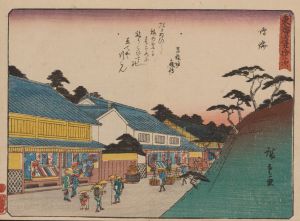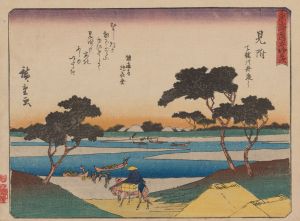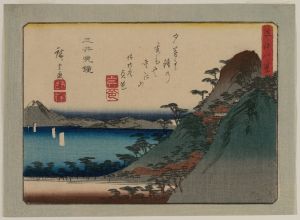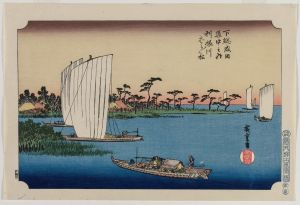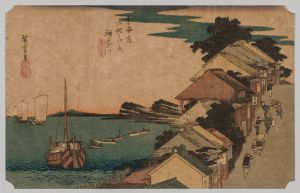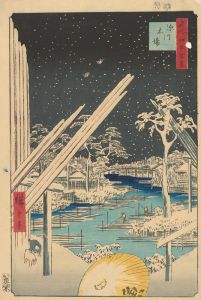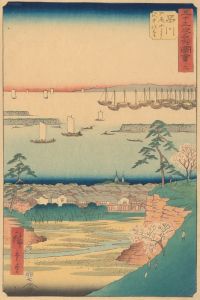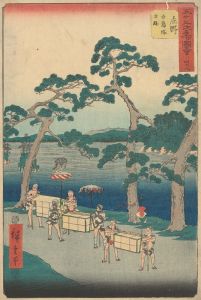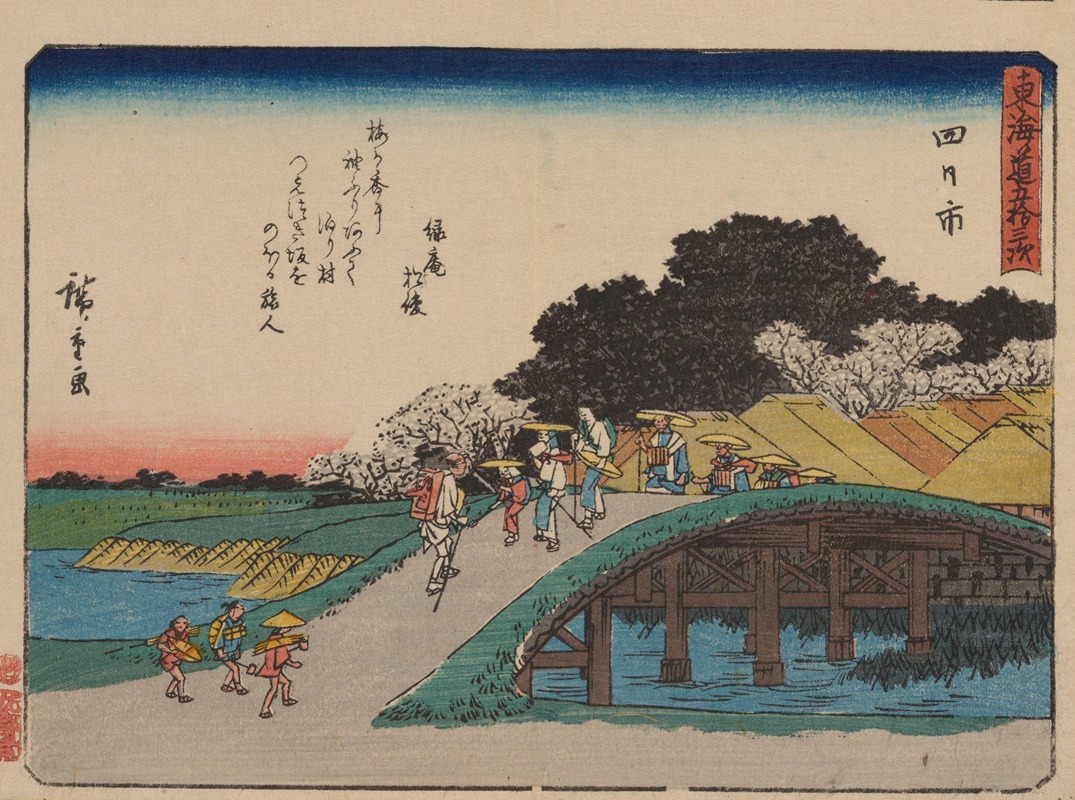
Tokaido gojusantsugi, Pl.44
A hand-painted replica of Andō Hiroshige’s masterpiece Tokaido gojusantsugi, Pl.44, meticulously crafted by professional artists to capture the true essence of the original. Each piece is created with museum-quality canvas and rare mineral pigments, carefully painted by experienced artists with delicate brushstrokes and rich, layered colors to perfectly recreate the texture of the original artwork. Unlike machine-printed reproductions, this hand-painted version brings the painting to life, infused with the artist’s emotions and skill in every stroke. Whether for personal collection or home decoration, it instantly elevates the artistic atmosphere of any space.
Tokaido gojusantsugi, Pl.44 by Andō Hiroshige
"Tokaido gojusantsugi, Pl.44" is a woodblock print created by the renowned Japanese ukiyo-e artist Andō Hiroshige (1797–1858). This artwork is part of Hiroshige's celebrated series titled The Fifty-three Stations of the Tōkaidō (Tōkaidō Gojūsan-tsugi no Uchi), which depicts the scenic landscapes and post stations along the Tōkaidō road, a major travel route connecting Edo (modern-day Tokyo) and Kyoto during the Edo period.
The specific print, Plate 44, corresponds to the station of Yokkaichi, one of the fifty-three post stations along the Tōkaidō. The series was first published in the 1830s by the publisher Hoeido and is often referred to as the Hoeido edition. This edition is considered one of Hiroshige's most iconic works and a masterpiece of ukiyo-e landscape art.
In this print, Hiroshige captures the essence of Yokkaichi with a dynamic composition. The scene portrays a windy day, as evidenced by the bent trees and the movement of a hat blown off a traveler’s head. A man is depicted chasing after his hat, while another figure struggles to carry a load against the gusts of wind. The background features a view of the sea, with boats visible in the distance, and the horizon is marked by soft, rolling hills. Hiroshige's use of perspective and his attention to atmospheric conditions, such as the wind, reflect his skill in conveying the natural elements and the daily life of travelers along the Tōkaidō.
Hiroshige's Fifty-three Stations of the Tōkaidō series was highly influential in both Japan and the West. It not only documented the geography and culture of the Tōkaidō road but also demonstrated Hiroshige's innovative approach to landscape art, which combined traditional Japanese aesthetics with a keen observation of nature and human activity. The series played a significant role in popularizing the genre of landscape prints within the ukiyo-e tradition.
The Hoeido edition of the series, including Plate 44, was produced using the traditional Japanese woodblock printing technique. This involved the collaboration of the artist, carvers, and printers, who worked together to create the final prints. The vibrant colors and intricate details of the prints were achieved through meticulous craftsmanship.
Today, Hiroshige's Fifty-three Stations of the Tōkaidō series, including the Yokkaichi print, is celebrated as a cultural and artistic treasure. Original impressions of the prints are held in museum collections and private collections worldwide, where they continue to be studied and admired for their artistic and historical significance.





